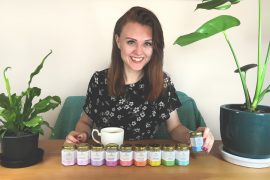Despite heavy marketing telling us wet wipes are flushable, they don’t break down in sewers. At the minimum, read the ingredient list of wet wipes and think about whether you want to rub those chemicals all over your baby’s skin. Remove your makeup with a washcloth, wash your hands with soap and water, and seriously, just use regular toilet paper.
5. Gum
It might not seem like one of our biggest environmental issues, but globally we chew about 560,000 tons of gum a year.
Gum doesn’t fill us up and doesn’t satisfy a nutritional need.
Worse, gum chewers frequently find the taste of fruit to be bitter because their taste buds have become acclimated to the flavour of artificial sweeteners.
Modern gum is soft and enjoyable to chew, but isn’t biodegradable and is a synthetic plastic. Even the incredible efficiency of a human digestive tract leaves gum mostly unaltered. And for some reason, up to 90% of chewing gum doesn’t ever make it to the trash can, making it the second most common form of litter in the world.
7. Crayons
As kids grow, the number of crayons spread around the house – nubs, broken pieces, some without the paper covering – is outrageous. I’d always considered these simply a nuisance, but it turns out unused crayons are a genuine environmental concern. Traditional crayons are made of paraffin wax, a byproduct of petroleum that turns into a waxy sludge in a landfill.
There are better options available that traditional paraffin wax crayons, like those made from beeswax or soy.
When your old paraffin wax crayons have turned to nubs, find a crayon recycling program like the Crayon Initiative, Crazy Crayons, or the Crayon Collection and let them turn your old crayons into new ones to distribute to hospitals and under-served schools.
But most importantly, for the love of all that is good parenting, don’t NOT give your kid a crayon in the name of the environment. Happy, creative, well-adjusted kids are a bigger issue here.
8. Balloons
Although the evils of balloons have been known as far back as 1990, we’re only just starting to pay attention. Turns out when you get down to it, balloons are another single-use plastic-item that end up as litter on some lucky highway where they can be picked up by prisoners. But most often, they end up in the oceans where they will be mistaken as food, disappearing as microplastics or parking in a landfill forever.
As whimsical, moving and photogenic as balloons are, they’re not something we really need to make a party lovely and memorable.
Danielle Vick is an environmental copywriter who moonlights as the Green Living Detective, uncovering how our modern actions impact the environment. She lives in the high Rocky Mountains of the US with her husband and daughter. Follow her on Facebook or Pinterest.










